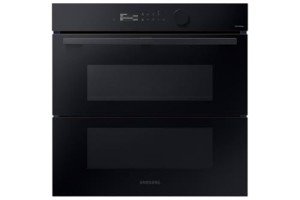How To Make An Amazing Instagram Video About Self Cleaning Oven Cycle

The Self-Cleaning Oven Cycle: An Informative Guide
Cleaning an oven can be a difficult and often dreaded task for many homes. Nevertheless, modern technology has supplied a service to this prevalent trouble: the self-cleaning oven cycle. This article aims to offer a detailed introduction of the self-cleaning oven cycle, how it works, the different kinds of self-cleaning cycles offered, safety issues, and maintenance tips to keep your oven in top condition.
Comprehending the Self-Cleaning Oven Cycle
Self-cleaning ovens operate on the principle of high heat to burn away food residue, grease, and gunk. This process changes remaining debris into ash, which can then be easily cleaned away.
How Does It Work?
The self-cleaning process normally includes the following steps:
- Preparation: Remove all racks, pans, and other products from the oven, as they may not stand up to the high temperature levels.
- Initiation: The user picks the self-cleaning cycle on the oven's settings.
- Heating: The oven warms to exceptionally heats (normally between 800 ° to 1,000 ° F or 427 ° to 538 ° C)for a specific duration, normally lasting from 2 to 6 hours.
- Cooling Down: After the cleaning cycle has finished, the oven needs to cool off before the door can be opened.
- Clean Down: Finally, once cooled, any ash residue inside the oven can be quickly cleaned away with a damp cloth.
Table 1: Comparison of Self-Cleaning Oven Features
| Function | Conventional Self-Cleaning | Steam Cleaning | Regular Oven |
|---|---|---|---|
| Cleaning Method | High heat incineration | Steam and heat combination | Manual scrubbing |
| Time Required | 2-6 hours | 30-90 minutes | Varies |
| Temperature | 800 ° -1,000 ° F(427 ° -538 ° C) | 212 ° F-300 ° F(100 ° C-149 ° C)Depends on cooking | |
| Safety Concerns | Yes (high heat) | Less | Moderate |
| Alleviate of Use | High | Moderate | Low |
Kinds Of Self-Cleaning Ovens
Self-cleaning ovens been available in several types. Each has unique features that accommodate different requirements and choices.
1. Traditional Self-Cleaning Ovens
These ovens utilize high temperature levels to turn food debris into ash. They are the most typical and efficient self-cleaning method.
2. Steam Cleaning Ovens
This variation utilizes steam and lower heat levels to clean up the oven interior. It's thought about more eco-friendly and can be less pungent than standard approaches.
3. Handbook Clean Ovens
While not technically self-cleaning, some ovens are created with easy-to-clean surface areas that lessen scrubbing effort.
Safety Concerns
Although self-cleaning ovens work, there are a number of safety issues that users should be conscious of.
Preventative measures to Take
- Ventilation: Ensure correct ventilation throughout the cleaning cycle to dissipate any smoke or smells.
- Supervision: It is suggested to stay present while the self-cleaning cycle remains in progress.
- Pet Safety: Keep family pets far from the kitchen area to avoid any accidental threats due to heat or smoke.
- Kid Safety: Use lock features to prevent kids from accessing the oven throughout cleaning.
Maintenance Tips
To make sure that your self-cleaning oven operates efficiently, follow these maintenance tips:
- Regular Use: Engage the self-cleaning cycle every few months, or whenever you see an accumulation of grime, to keep your oven in ideal condition.
- Examine Seals: Examine the door seals frequently to guarantee that they are undamaged, as harmed seals can lead to heat loss and affect performance.
- Tidy Manual Components: For areas that are not cleaned instantly, such as door glass and racks, use non-toxic cleaning options to maintain look and performance.
- Avoid Using Foil: Do not line the oven with aluminum foil, as it can limit air flow or trigger damage during the self-cleaning cycle.
Table 2: Maintenance Tips for Self-Cleaning Ovens
| Task | Frequency | Notes |
|---|---|---|
| Run Self-Clean Cycle | Every 3-6 months | Usage when heavily stained locally. |
| Inspect Seals | Regular monthly | Make sure seals are intact and tidy. |
| Handbook Clean Components | Regular monthly | Usage non-toxic solutions. |
| Usage Aluminum Foil | Never | Can trigger damage and restrict air. |
Often Asked Questions (FAQs)
1. Is the self-cleaning oven cycle safe?
Yes, self-cleaning ovens are developed with safety in mind. However, it is crucial to follow the manufacturer's preventative measures.
2. How frequently should I use the self-cleaning cycle?
It's typically advised to run the self-cleaning cycle every 3 to 6 months, depending on usage. If you frequently bake or roast, more frequent cleaning might be essential.
3. Can I leave my oven ignored throughout the self-cleaning cycle?
While many contemporary self-cleaning ovens include safety features, it's suggested to monitor the cycle to manage any unexpected concerns.
4. Do self-cleaning ovens use a great deal of energy?
Self-cleaning ovens do take in a substantial amount of energy during the process due to the heats. Nevertheless, this is typically a one-off usage every few months.
5. What should Self Cleaning Oven Lifespan do if the self-cleaning cycle fails?
If the oven stops working to complete the self-cleaning cycle, seek advice from the user manual for fixing tips, or get in touch with a professional service technician.
The self-cleaning oven cycle provides a hassle-free way to maintain a tidy cooking environment while decreasing the effort required. Comprehending its functionality, types, safety preventative measures, and maintenance tips allows users to maximize this modern-day device function. By incorporating regular self-cleaning cycles into cooking area routines, users can take pleasure in a sparkling tidy oven with minimal hassle.

